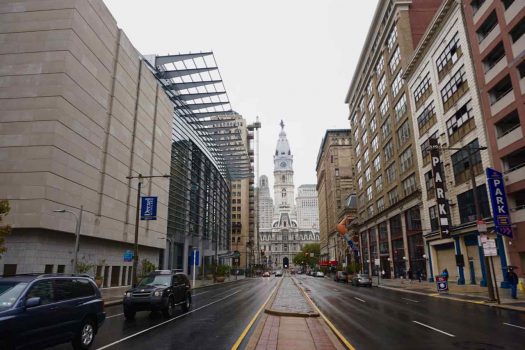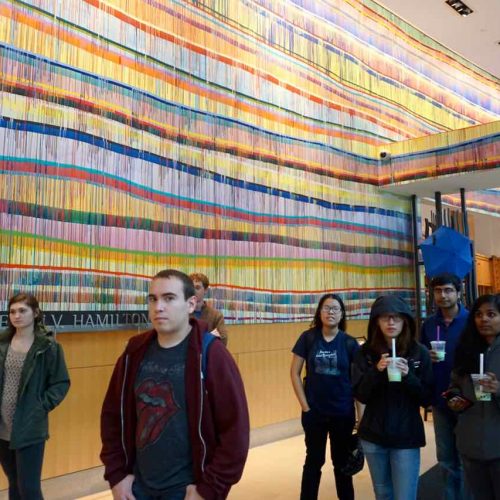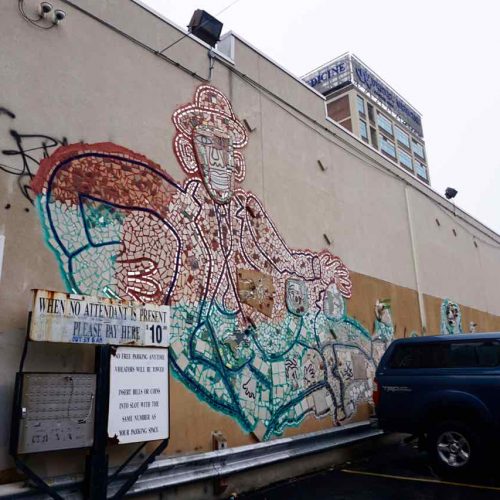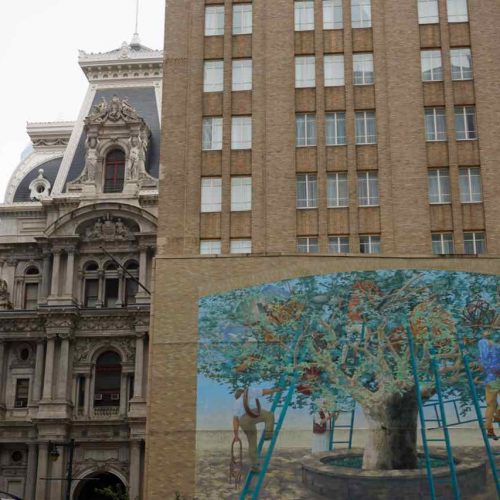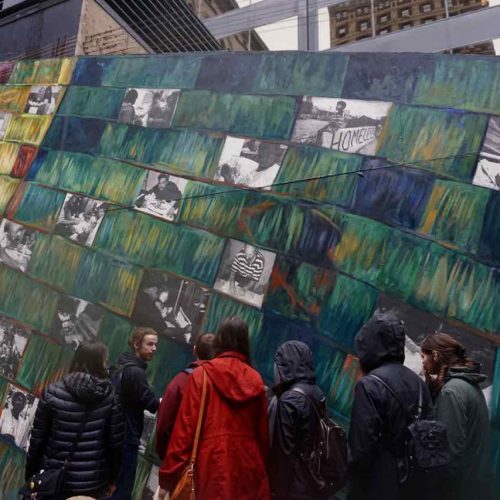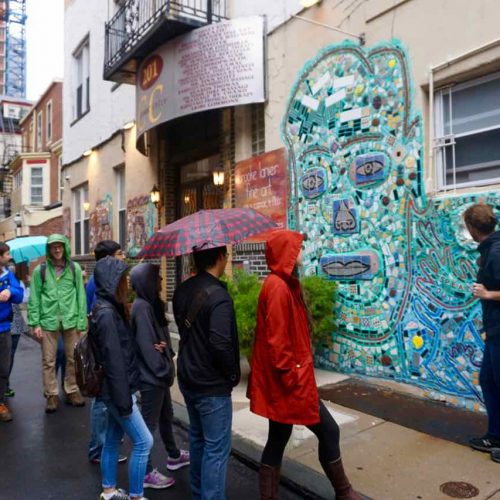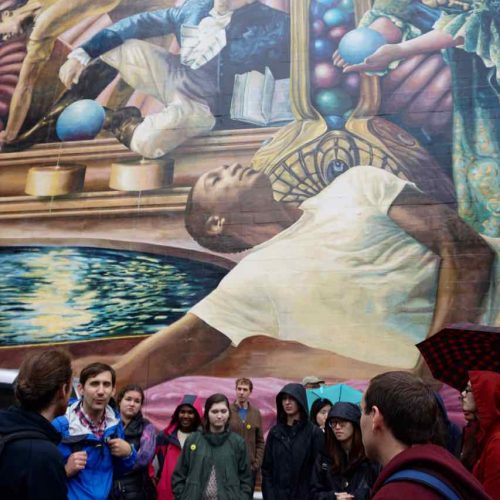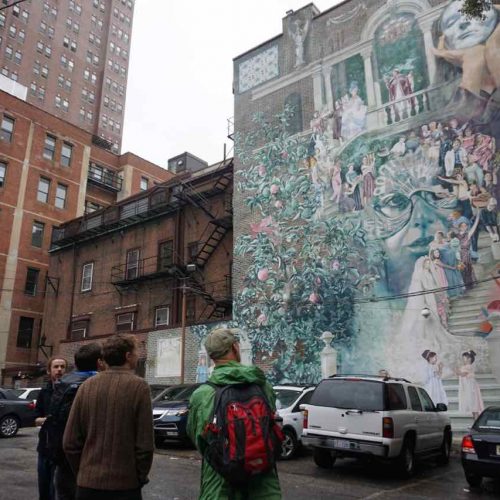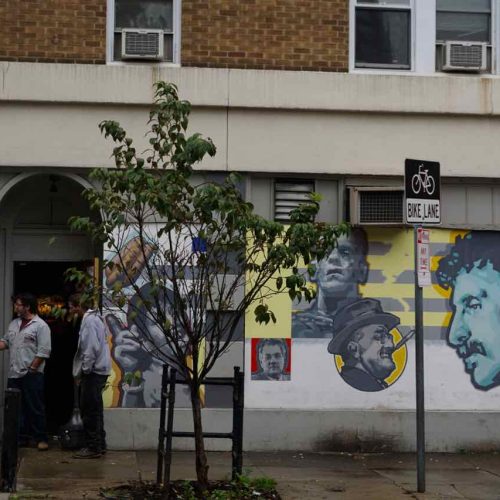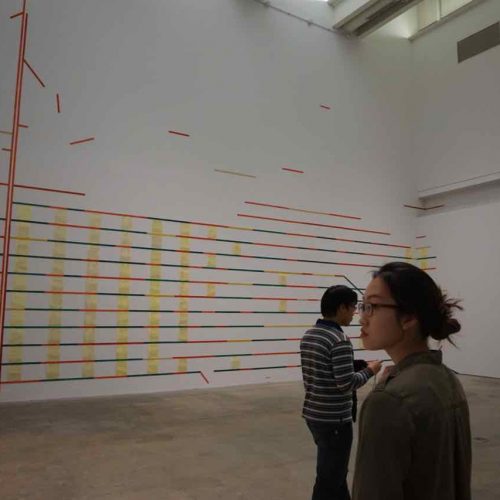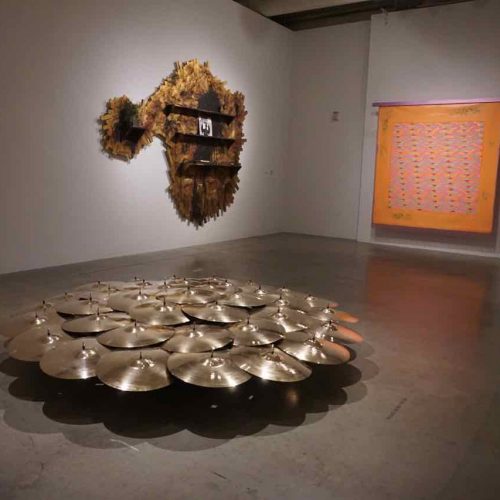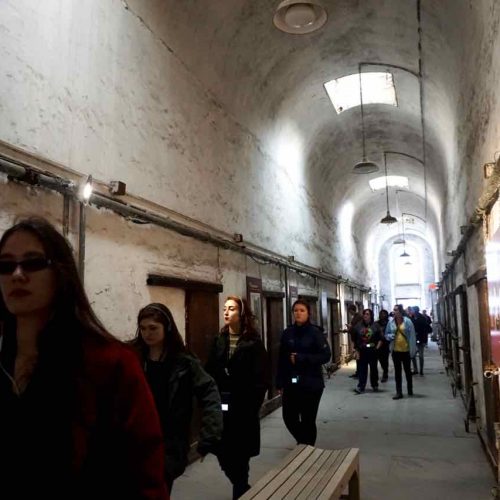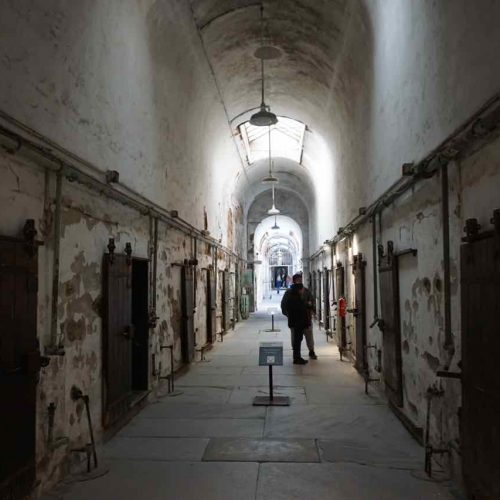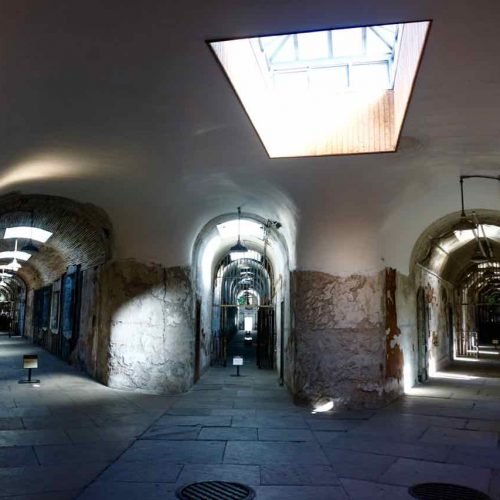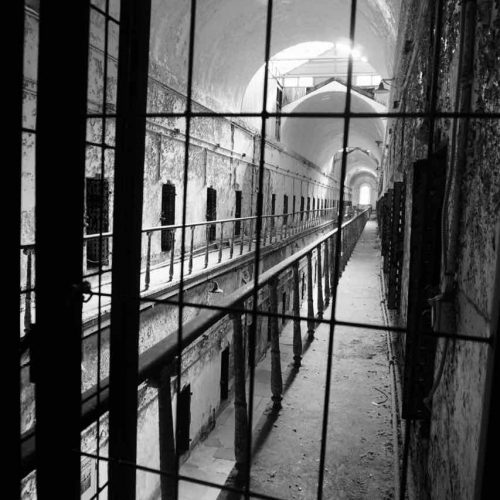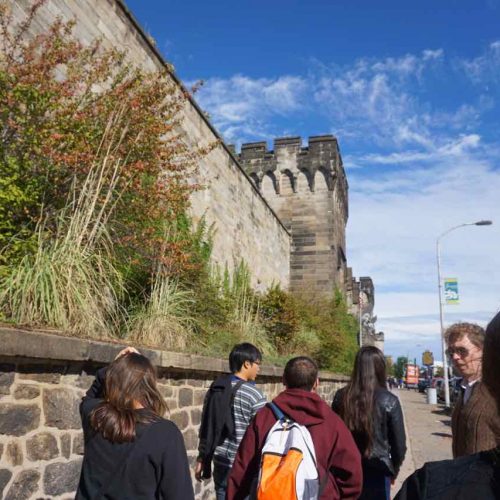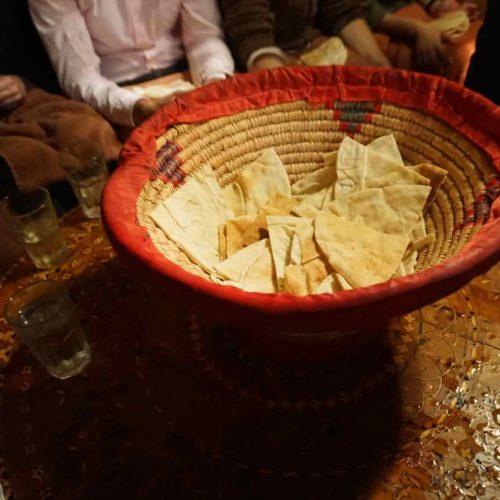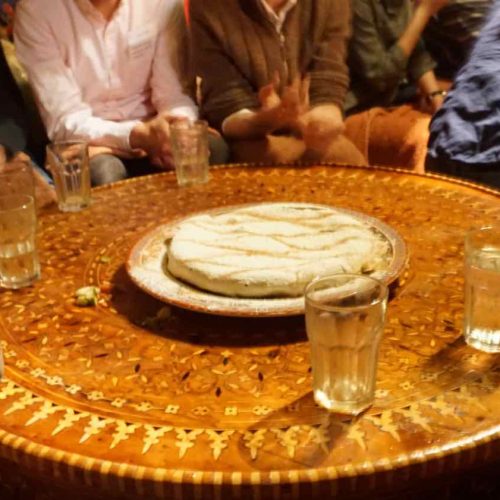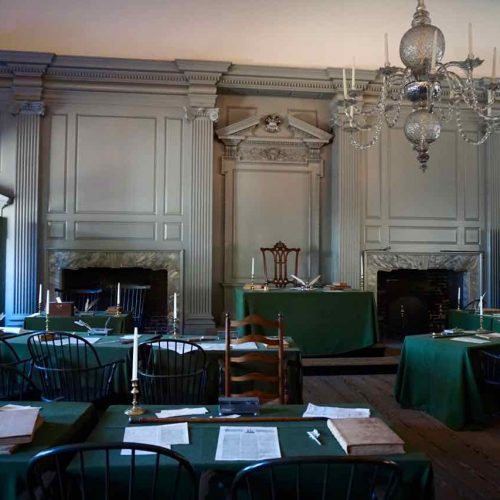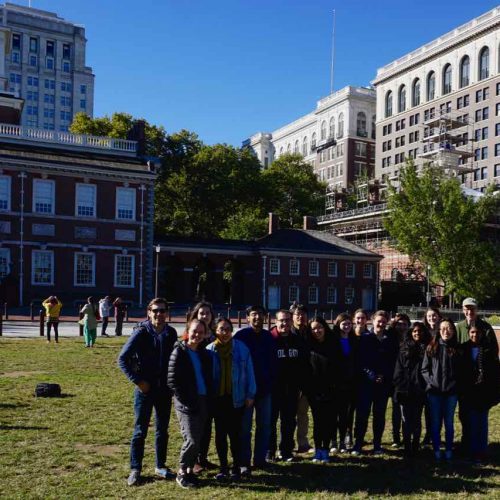During fall break, the AMS embarked on a trip with Dean Peter Tschirhart and Professor Robert Nemes to Philadelphia, the first world heritage city in the USA, for a feast of art and culture.
Day 1: Saturday, 8 October
The 4-hour van ride from Hamilton was an enjoyable one, as fall break is the prime time for colorful foliage. And we had plenty of Dunkin’ Donuts on board, paired with stimulating discussions—including whether we should colonize Mars, and why public transport in the US doesn’t work. Our destination: center city Philadelphia.
Founded by William Penn in 1682, Philadelphia was imagined to be a city where everyone is welcomed. Nowhere is that idea better exemplified than in the Reading Terminal Market. I first learned about the market it in a sociology class at Colgate. Described as a “cosmopolitan canopy,” the Reading Terminal offers respite and an opportunity for diverse population to come together and gain social exposure in an urban jungle. And from what we experienced, theory was reality.
After checking in at our hotel, we all ventured two blocks to the market, which presented as a multi-ethnic food market full of hustle and bustle (and jostle). With pretzels coming fresh out of the ovens at Miller’s Twist, famous cheese steak grilling and sizzling, and coffee pots clanking, the market welcomed us with open arms. And as I queued for the oldest American ice cream (that had always been at the top of my Philadelphia wish list), I indulged in people-watching—locals as well as tourists stood in long lines, engaged in casual conversations, shouting and gibbering as they hovered around scouting for seats. I inhaled and the air was dense with Thai spice, Amish baked goods, and barbecued meat (maybe from the acclaimed best sandwich in America from DiNic’s?).
Feeling satisfied, we then braved the rain and walked around downtown Philly with our guide Allen to learn about the mural arts in Philly. October is the “Mural Arts month” for Philadelphia. To bring more arts to public space, the city has been running a Mural Arts Program—the nation’s largest public art program—with the belief that art ignites change.
Walking around and admiring artworks on a random wall, in a carpark, and outside a bar, I found it interesting how the personal became the public, and how the canvas became part of the city. These murals exist not to differentiate and discriminate those who do not have access to “high culture,” but to bring the community together for to provide inspiration and a common urban experience.
The mural tour also explored inclusivity. In the piece Finding Home, participants from Project H.O.M.E., an organization that provides a variety of essential resources to people in recovery and in transition, learned simple weaving techniques and created scarves and other woven products as the canvas for the mural. As viewer, I was provoked to reflect on what it means to be an inviting community, or simply have a home. I thought about the homeless shelter in Boston, where I worked after my first year, as a Manzi fellow. And while walking around in the city center, I encountered lots of homeless people dragging all their belongings idling in the light rain. Maybe for them, home was a physical place where they can sleep; or maybe it’s an in-between space, where they can hang out, feel invited, respected, and rooted.
Day 2: Sunday, 9 October
After a late morning breakfast, we took the trolley from center city to the University of Pennsylvania campus to visit the Institute of Contemporary Arts. The exhibit we saw was called The Freedom Principle: Experiments in Art and Music 1965 to Now, and it explored the cross-pollination between jazz music and art. Organized to coincide with the 50th anniversary of the Association for the Advancement of Creative Musicians (AACM)—a Chicago-based group that is devoted to nurturing, performing, and recording serious, original music, the exhibition was a collection of engagements with avant-garde expression.
But before the exhibition, we stopped by Federal Donuts for some hot fresh treats (just a “coincidence” that we had donuts for two days in a row).
To me, the AACM was unique in the way they incorporated socio-political struggle into their arts. These artists were not only breaking new grounds through improvised jazz to explore their identities and express their frustrations, but also collaborating with dancers, theatre artists, poets and visual artists. For example, the AACM have collaborated with AfriCOBRA (the African Common of Bad Relevant Artists) to support African American struggle for freedom, equality and justice.
Other than political urgency, the art pieces were also rich in cultural context, mostly African American and native American. I really liked one piece called Rio Negro II, which was a robotic-acoustic installation that consists of rain sticks, chimes, bamboo, earth, wood, rocks, and sculptures. When one element of the installation kicked, a mechanism of sound and kinetics started. I was really transfixed by the mixing of the ancient handicrafts with the contemporary technology and the multi-sensory experience delivered through the installation.
Later on Sunday afternoon, we took a public bus to the Eastern State Penitentiary. (Surprisingly, it was no one’s first time taking a public bus!) Abandoned in 1971, the haunting castle-like Gothic architecture was founded upon the Quaker-inspired belief that solitary confinement could reform criminals. As a result, prisoners had to endure long periods of isolation and silence.
Once the most expensive building in the USA, the Eastern State Penitentiary was also the model for about 300 prisons across Asia and Europe. The original structure was a single 11-acre cell block that was minimalist at best, inhumane at worst. And its most notorious criminals included bank robber “Slick Willie” Sutton and Al Capone.
The United States now has the highest rate of incarceration in the world, with 2.2 million citizens in prison or jail by far. This phenomenon has generally been driven by changes in laws, policing, and sentencing, not by changes in behavior. The results have disproportionately impacted poor and disenfranchised communities but the historic changes have remained almost invisible to many Americans. To me, the greatest misery is really alive but not living, so it was quite ironic that prisoners had to lived in such conditions in the city of brotherly love.
For dinner on Sunday, we had an authentic Moroccan food experience at Marrakesh, a home-owned restaurant with vibrant and mystical decor. I have never had a meal in the US by sitting around a round table with about 10 people and using hands to share food. The physical closeness made the ambience so collegial and everyone felt much more bonded by passing the food and nudging each other. The seven-course meal included pita bread with the most savory eggplant dip, phenomenal honey almond lamb (Peter’s favorite), and succulent cumin-infused baked chicken, and without doubt, won everyone’s palette and heart.
Day 3: Monday, 10 October
Finally, on the last day, we visited the Independence Hall and Liberty Bell, where the founding fathers of America signed the Constitution and the Declaration of Independence. A place where many Americans started their quest for freedom and independence, the landmark attracts so many worshippers that most of us only managed to take a peek at the Liberty Bell. I thought the cracked bell was a good metaphor, in light of the presidential debate the day before our visit. As an icon of freedom, the crack is a reminder that the liberty we have now is imperfect. But with our ideals enacted in the Constitution, we always have something to strive for.
With our senses delighted, muses enlightened, we bid goodbye to the “Athens of America”.


